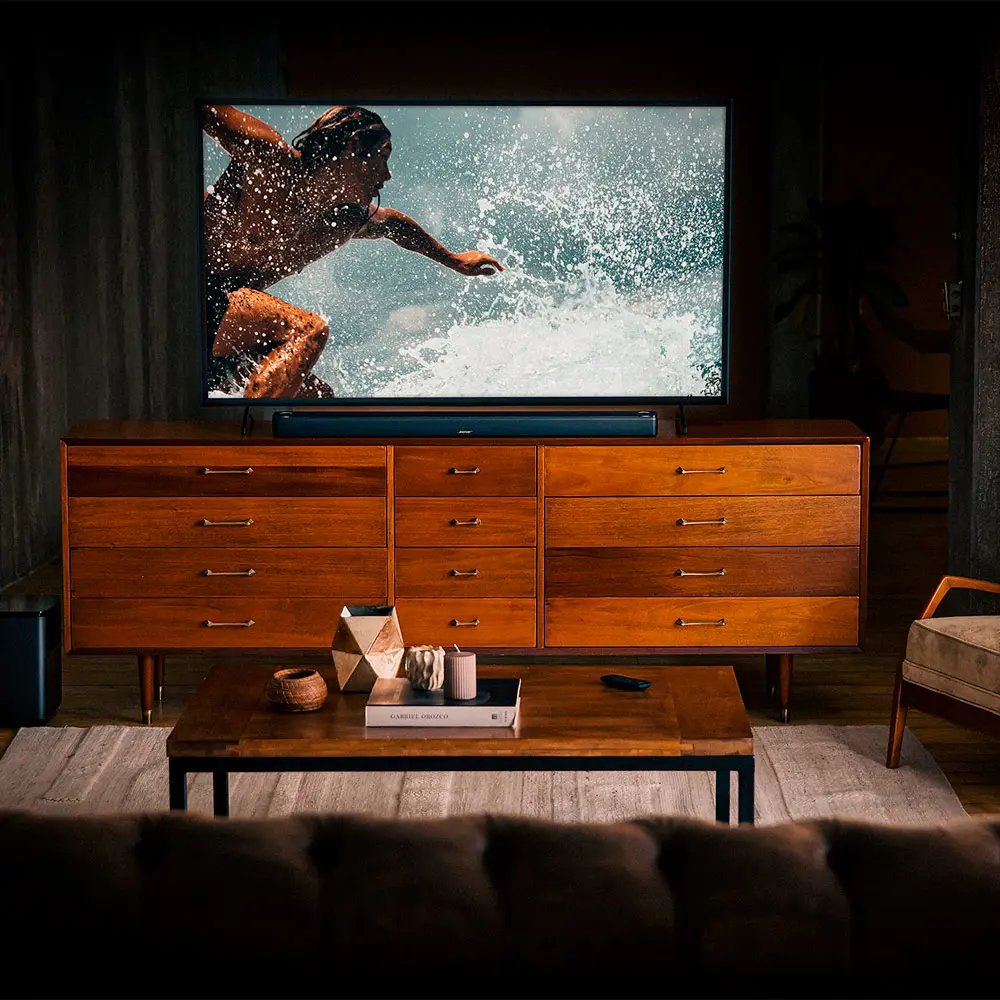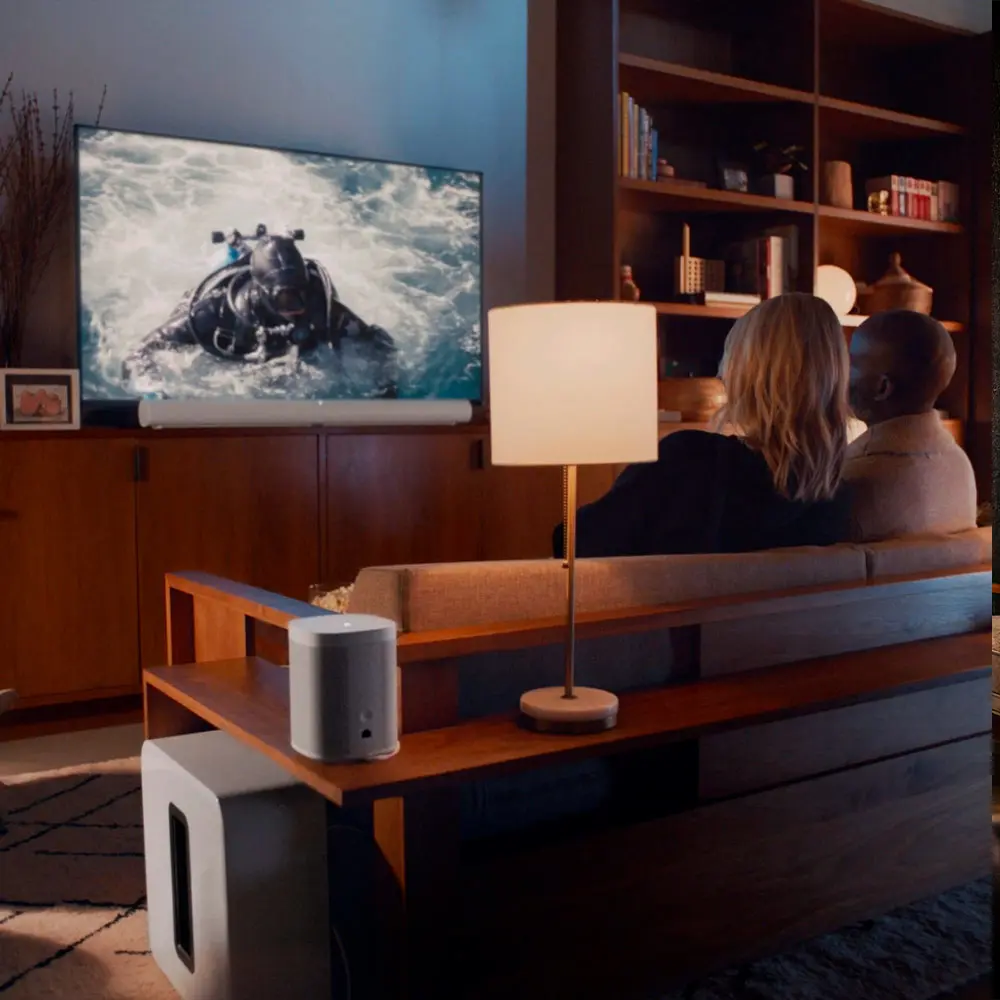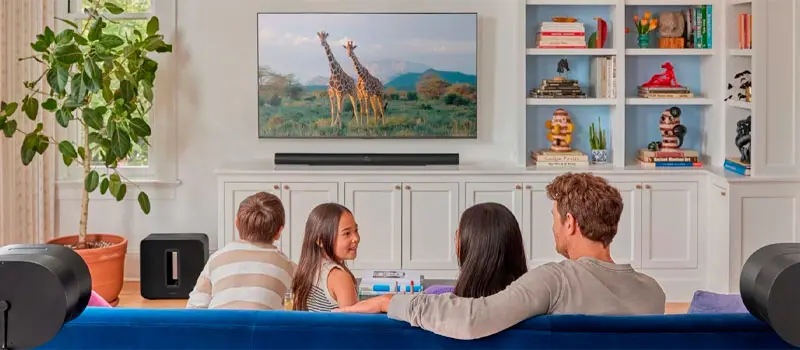What kind of speaker should I choose?
Whether you're a passionate music lover or simply looking to enhance the audio quality of your television, choosing the right audio speakers is essential. Here is a practical and comprehensive guide to help you find the model that fits your lifestyle or transforms the sound of your setup.

1. How do I choose an audio speaker?
Wired or Wireless Speaker: Which One to Choose?
Each type of speaker has its own advantages:
Wired speakers: They offer superior sound quality and never run out of battery. Ideal for fixed installations in a living room or listening room.
Wireless speakers: Operate via Bluetooth or Wi-Fi, perfect for mobile use or easy integration in different rooms. Some wireless speakers come with built-in batteries for optimal portability.
Tip: If you’re looking for maximum flexibility, opt for Bluetooth speakers with extended battery life.
One or Multiple Speakers?
A single speaker: Perfect for a small room like a bedroom. Great for listening to music anywhere, whether indoors or outdoors.
Pair of stereo speakers: Recommended for a more natural audio experience, especially for music designed to be listened to on stereo speakers.
Add a subwoofer: If you love deep bass (movies, electronic music), a subwoofer will perfectly complement your system.
Home cinema kit: For total immersion, consider a 5.1 or 7.1 Home Cinema system that includes multiple speakers and a subwoofer. Ideal for movie lovers.
Speaker Size: Large or Small?
The size of the speaker plays an important role:
Large speakers: Provide greater power and richer sound, suited for large rooms.
Small speakers: Ideal for smaller spaces like an office or bedroom. Some compact models deliver impressive sound quality.
Advice: Consider the size of your room and the intended use to choose the right size.

2. The different types of loudspeaker
Classic Speakers
These versatile speakers are perfectly suited for small and medium-sized rooms. Often sold in pairs, they are ideal for everyday use, whether for listening to music or watching TV.
Floor-Standing Speakers
Equipped with multiple built-in drivers, floor-standing speakers deliver powerful and rich sound. They are ideal for large spaces and for those who want immersive sound in their living room or lounge.
Wireless Speakers (Wi-Fi and Bluetooth)
Wi-Fi Speakers: Perfect for home use, they offer superior sound quality and can be synchronized across multiple rooms for a harmonious musical ambiance throughout the house.
Bluetooth Speakers: Lightweight, portable, and often waterproof, they are perfect for outdoor use or for taking your music anywhere.
Soundbar
The soundbar is a compact and efficient audio solution, ideal for televisions. It provides improved sound compared to built-in TV speakers and is suitable for small spaces where a full home cinema system may not be practical. Some models include a subwoofer for enhanced bass or advanced connectivity options such as Bluetooth and Wi-Fi.
High-Power Partybox Speakers
These party speakers are perfect for hosting parties or events. With their high sound output and light effects, they create a festive atmosphere. Some models even include a microphone for karaoke.
Subwoofers
A must-have for bass lovers, subwoofers complete an audio system by enhancing low-frequency sounds. They are perfect for movie enthusiasts and electronic music fans.
Hi-Fi System
While not strictly speakers, Hi-Fi systems offer a complete audio solution. A traditional Hi-Fi system consists of two speakers for high-quality music listening, with options to play CDs, listen to the radio, or stream music via Bluetooth or USB. All-in-one models integrate all these features into a compact device, ideal for small spaces.
PC Speakers
Designed for use with a computer, these speakers significantly enhance the audio experience when listening to music, watching movies, or playing video games. They are suitable for desks or workspaces.

3. Installation
Positioning Your Speakers Correctly
For optimal audio quality in a fixed setup (home cinema, high-fidelity system), it’s important to position your speakers properly based on your room configuration and the type of speakers:
Ear level: Speakers should be placed at ear level when you are in your listening position, such as seated on your sofa.
Equal distance: Ensure the speakers are an equal distance from your position for perfect sound balance. If this positioning is not possible, use the balance settings on your system to compensate for differences and maintain audio equilibrium.
Orientation: Slightly angle the speakers toward your position to direct the sound toward you, especially for stereo models.
Dedicated stands: For compact or bookshelf speakers, use appropriate stands to optimize sound dispersion and minimize vibrations. Ideally, place them on specially designed stands at ear level and away from walls to avoid unwanted resonance effects. This is particularly important in small spaces, such as an office or bedroom, where every sonic detail matters.
Room placement: Avoid placing your speakers against walls or in corners, as this can create unwanted resonance. Leave enough space for the sound to diffuse properly.
Subwoofer: Place the subwoofer near a wall to enhance bass, but avoid enclosing it in a cabinet.
Soundbar: Position the soundbar directly below or in front of your TV, ideally centered with the screen. For models with a wireless subwoofer, place the subwoofer near a wall but away from corners to avoid overly amplified bass.
By following these tips, you’ll optimize your speakers' performance and enjoy an exceptional sound experience, no matter the type of content you’re listening to.
Multi-Room Playback
Wi-Fi speakers allow you to sync music across multiple rooms, creating a harmonious ambiance throughout your home.

4. Understanding technical specifications
How Does a Speaker Work?
A speaker works somewhat like a musical instrument: it transforms an electrical signal into sounds we can hear. Here’s how:
Air Compression: Inside the speaker, a coil attached to a movable diaphragm moves in response to the electrical signal. This movement pushes or pulls the diaphragm (or cone), compressing and releasing the air around it. This compression creates sound waves.
Sound Frequencies: When the coil moves quickly, the waves move fast, producing high-pitched sounds (high frequencies). When it moves slowly, it generates low-pitched sounds (low frequencies).
This process converts electrical energy into sound. The speaker achieves this through transducers (a woofer for bass and a tweeter for treble). Some active speakers include a built-in amplifier (like Wi-Fi and Bluetooth speakers), while passive speakers require an external amplifier.
Power in Watts
A more powerful speaker can reproduce clear sound even at high volumes. Power is expressed in watts and indicates the speaker’s ability to handle powerful audio signals without distortion.
Number of Channels
2.0: Two speakers (left and right) for stereo sound.
2.1: Two stereo speakers + a subwoofer to enhance bass.
5.1: A surround configuration with five speakers and a subwoofer, perfect for full immersion in movies and video games.
By following these guidelines, you’ll be able to choose speakers that perfectly match your expectations in terms of sound quality and usage.
We hope this has given you more clarity! If you still have questions or are unsure about which model would suit you best, our in-store advisors are here to help.
Feel free to visit them to benefit from personalized advice. Our HIFI Luxembourg stores even offer demonstration products, so you can test and compare models before making your decision.
Updated on August 12, 2025


